Everything You Need To Know About The October 2023 Partial Solar Eclipse
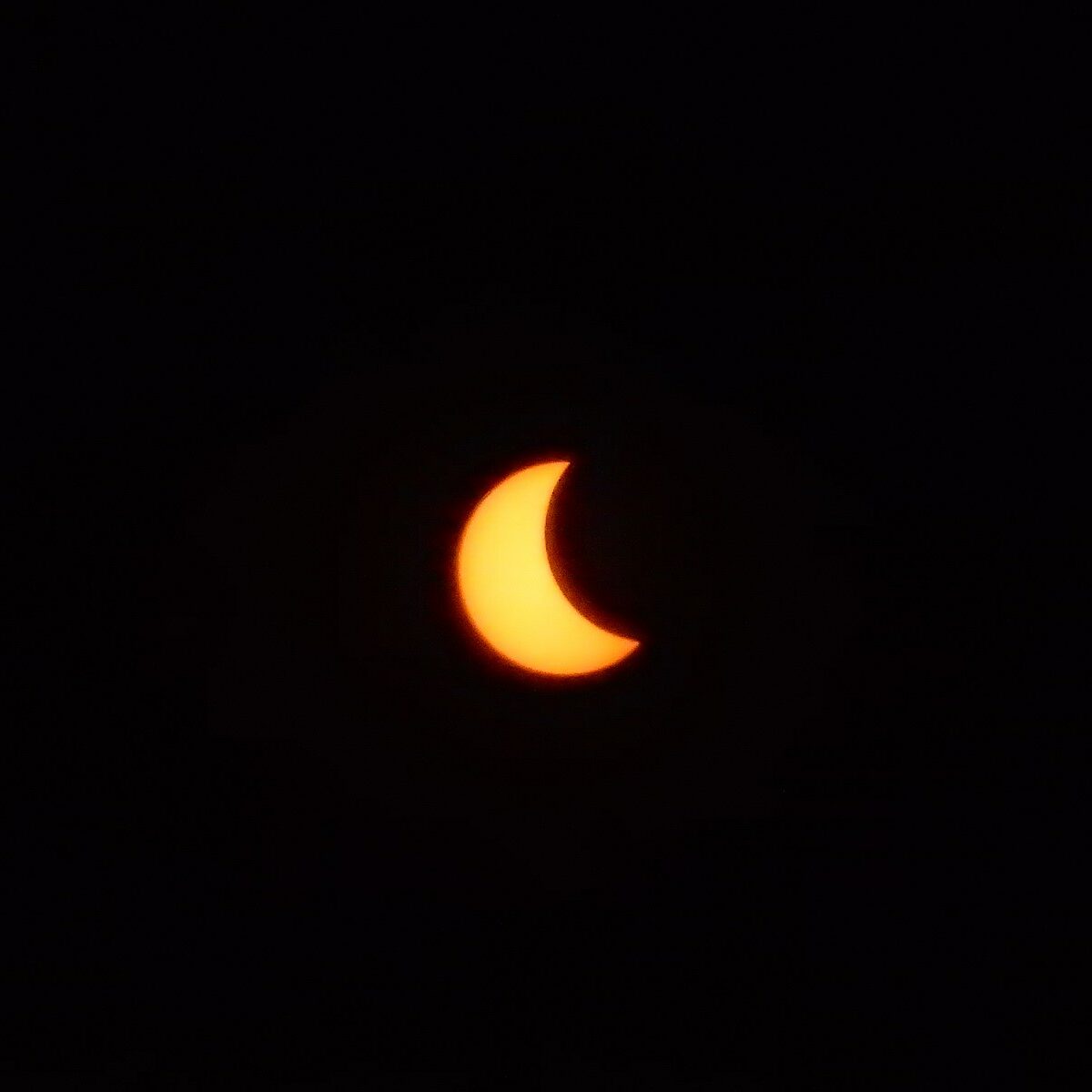
Header Image: Partial Solar Eclipse
On October 14, 2023, starting at 10:37 am CDT, the Moon will begin to pass in front of the Sun and a partial (or annular) solar eclipse will occur.
Here’s everything you need to know to see this celestial phenomenon from Illinois or most locations in the United States.
Solar Eclipse Basics
A solar eclipse occurs when the Sun, the Moon, and Earth line up, and the Moon (which is between the Sun and Earth) temporarily blocks the Sun’s light. The kind of eclipse you see from your location depends on the Moon’s orbital path across Earth’s surface and how far away the Moon is from Earth and from the Sun.
The only Moon phase where the Sun-Moon-Earth special lineup can happen to create a solar eclipse is new Moon, and we don’t get a solar eclipse at every new Moon. This is because the Moon’s orbit around the Earth is angled a little with respect to Earth’s orbit around the Sun. Due to this angled orbit, the Moon’s shadow at new Moon usually misses the Earth. When the Sun, Moon, and Earth line up just right and the Moon’s shadow falls on the Earth, then we see a solar eclipse.
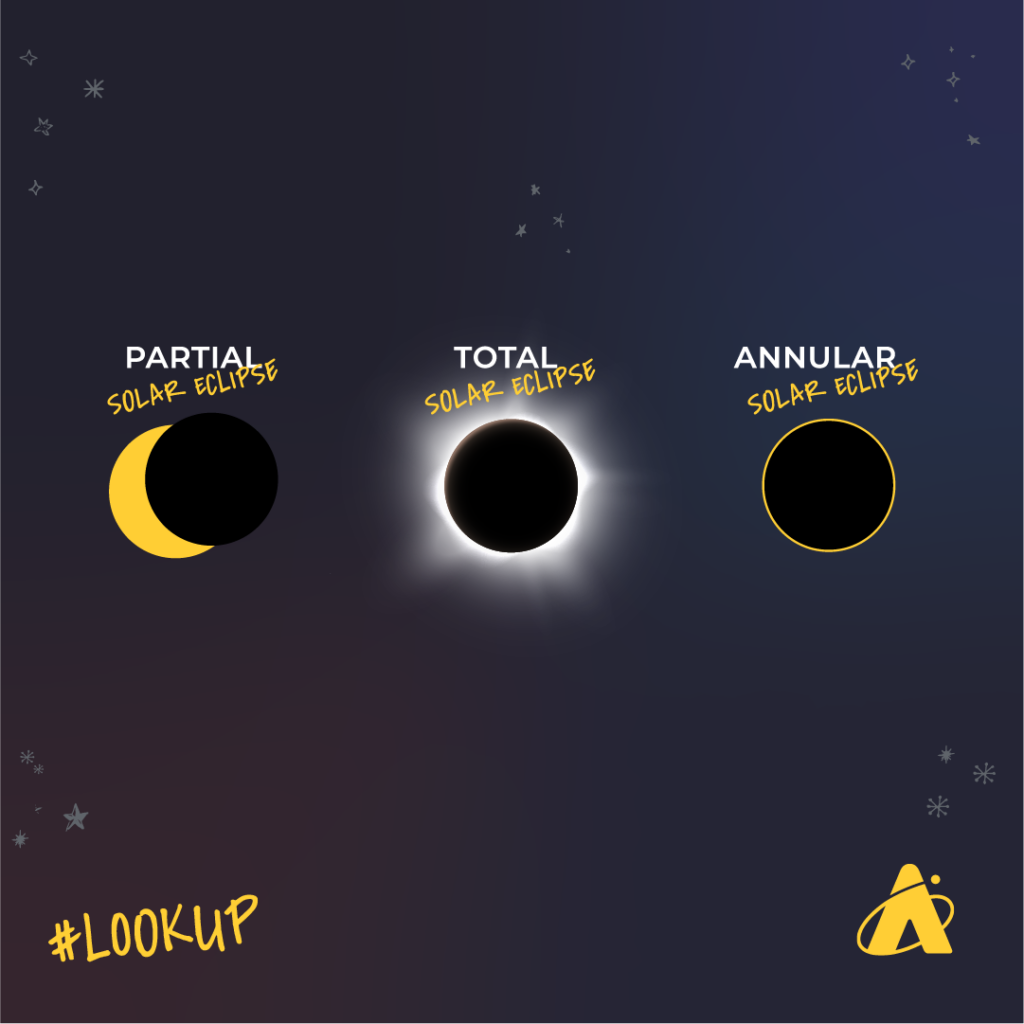
There are three different types of solar eclipses: partial, total, and annular.
A partial solar eclipse is when the Moon partly covers the Sun—it usually looks like a bite has been taken out of it!
A total solar eclipse is when the Moon totally covers the Sun.
An annular solar eclipse happens when the Moon appears a little smaller in the sky than the Sun, so it cannot fully block the Sun’s rays. During an annular eclipse, you’ll see a bright ring around the edges of the Moon with the Sun peeking out from behind it. The word annular is Latin and means “ring.”
Whether we get an annular solar eclipse or a total solar eclipse depends on two distances. The Earth-Moon distance varies by about 12%, and the Earth-Sun distance varies by about 3%. The result of those changing distances means that the apparent sizes of the Moon and Sun in our sky both change a little bit. Sometimes, the Moon appears large enough to fully cover the Sun and we get a total eclipse. Sometimes, the Moon isn’t large enough to fully cover the Sun, and we get an annular eclipse.
Can I See The Annular or Partial Solar Eclipse From My Location?
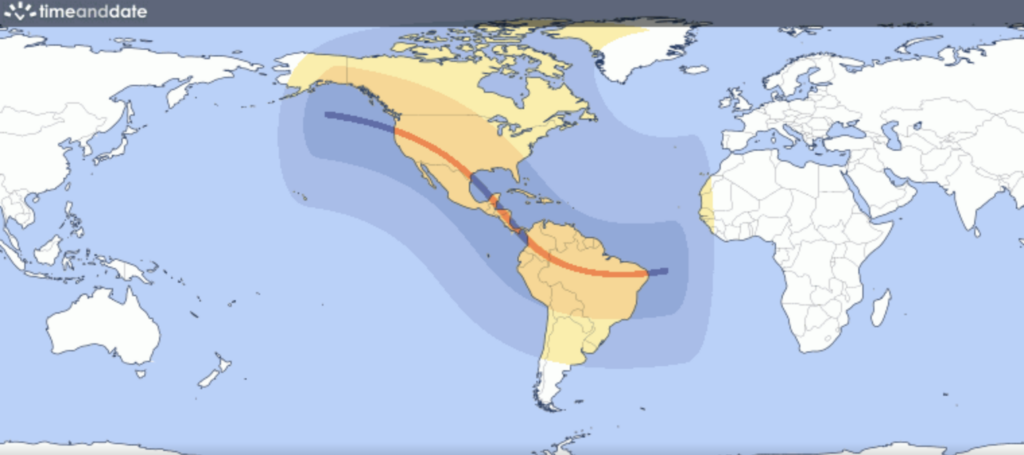
This solar eclipse will be visible for most of the United States of America, as well South America. You will be able to see either an annular solar eclipse or partial solar eclipse depending on your location.
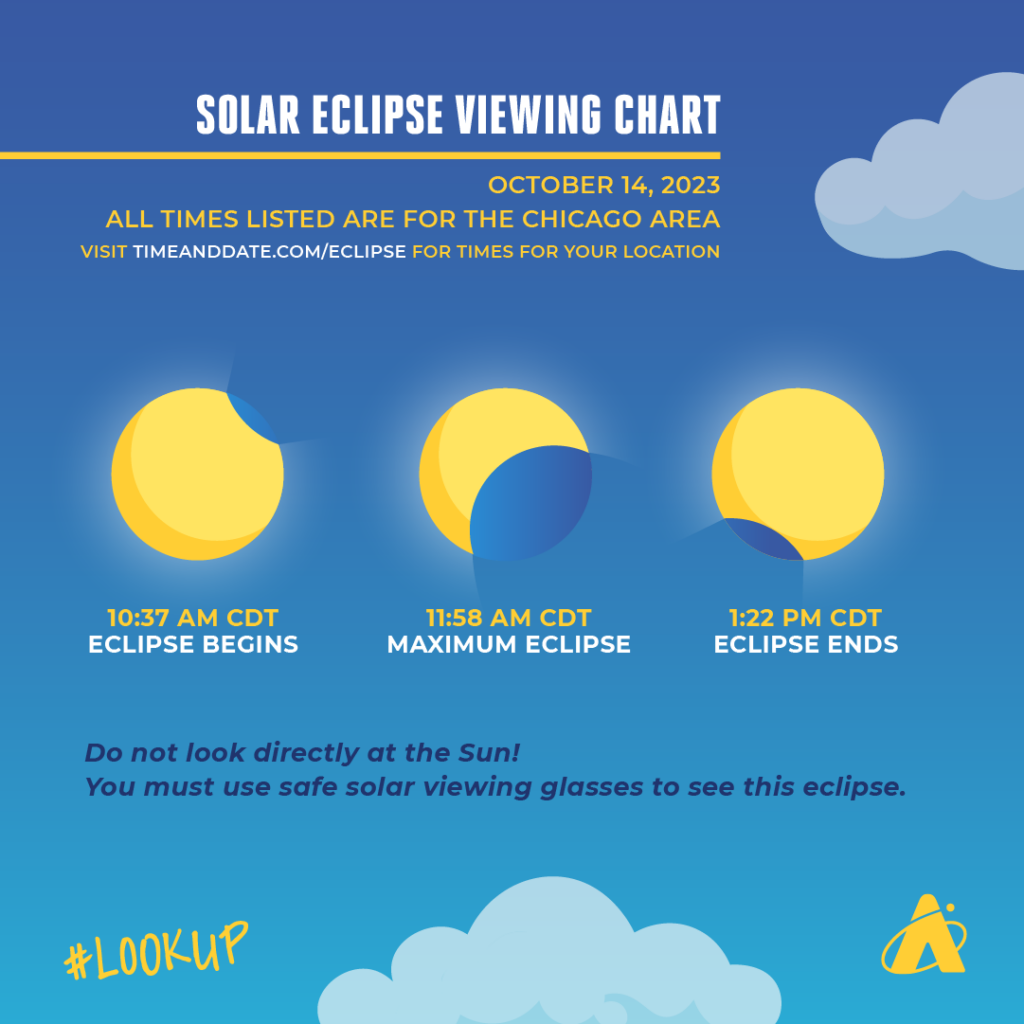
In Chicago, the partial solar eclipse will occur from 10:37 am–1:22 pm CDT. It is at its maximum coverage—when 43% of the Sun will be covered by the Moon as seen from Chicago—at 11:58 am CDT. Most cities in Illinois and the midwest will see 40%–50% maximum coverage of the Sun during the peak of the partial solar eclipse.
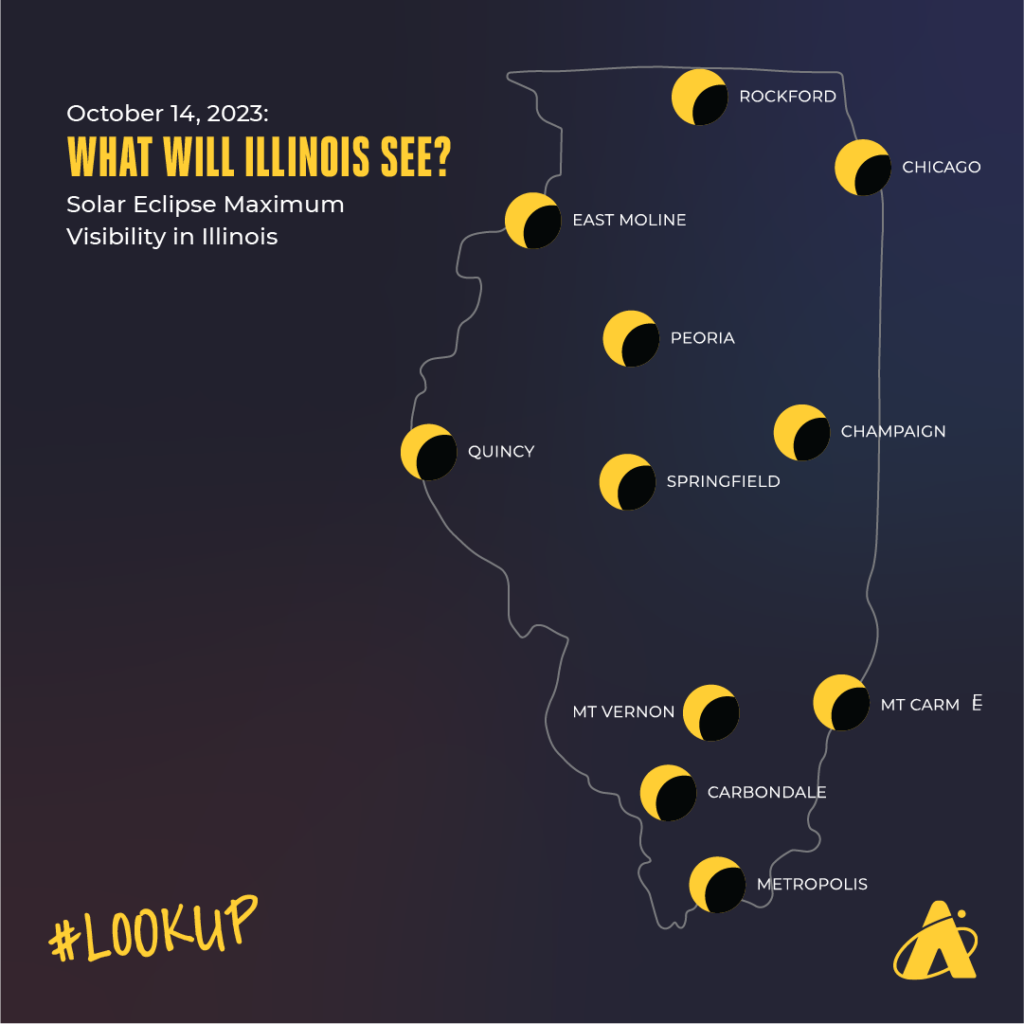
The annular solar eclipse path will go through parts of Oregon, Nevada, Utah, Colorado, Arizona, New Mexico, and Texas.
To see the annular solar eclipse path and figure out when this solar eclipse will be visible in your area, Check out Time and Date’s interactive map.
How Do You Safely View A Solar Eclipse?
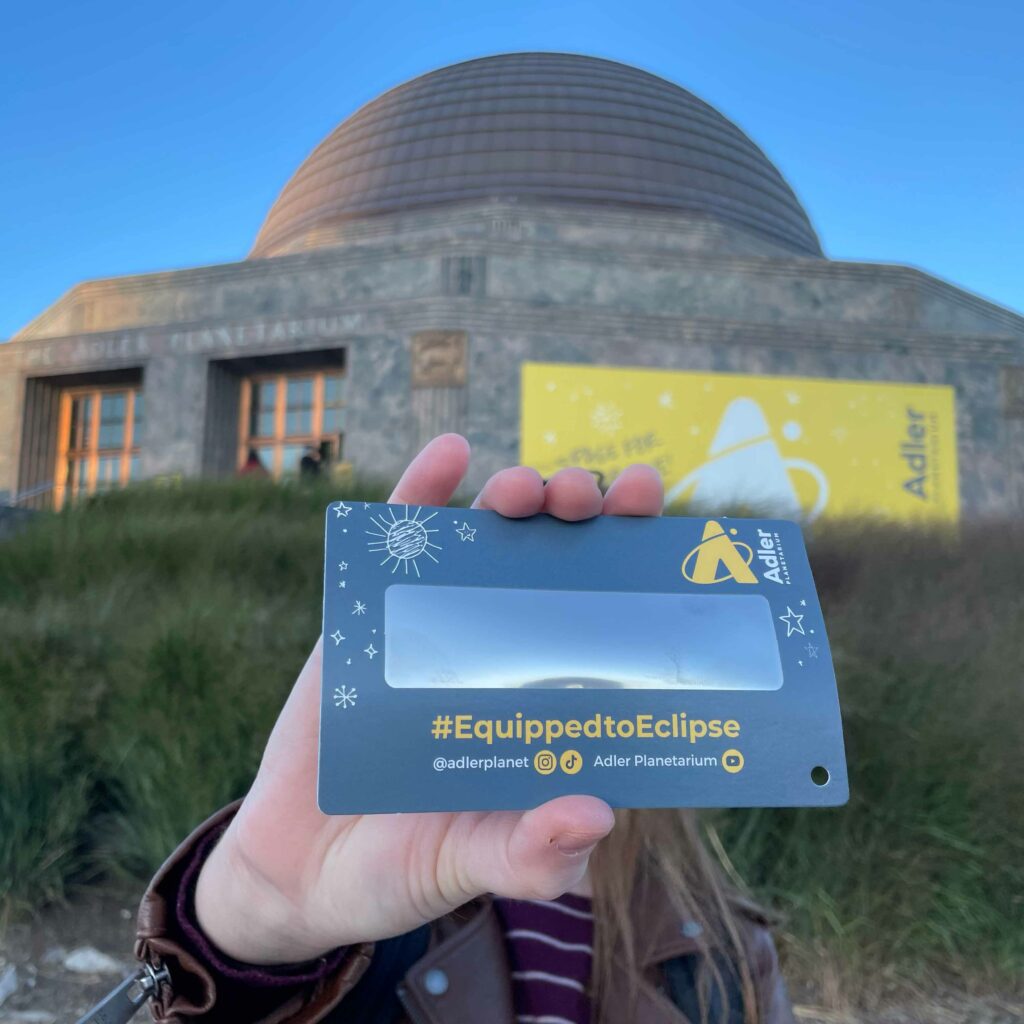
You must always use proper solar viewing equipment when looking up at any type of solar eclipse. Homemade filters or regular sunglasses are NOT safe for viewing an eclipse, and irreversible eye damage can occur in seconds. You won’t feel eye damage until it has happened. You do not have nerve endings inside your eyes that will register pain as the damage is occurring. Certified solar viewing glasses or viewers must comply with the transmission requirements of the ISO 12312-2 international standard to be used to look up during any type of solar eclipse.
The only exception to the rule of never looking at the Sun is this: if you are within the path of totality and the Moon has covered 100% of the bright surface of the Sun, that’s the only time when you can safely view the eclipse without solar viewers or glasses. In fact, you need to remove your viewers or glasses to view totality directly. Why? The solar viewers are too dark! You won’t see totality! As soon as the bright surface of the Sun reappears after totality, then you will need to look away from the Sun and/or put your solar glasses or viewers back on.
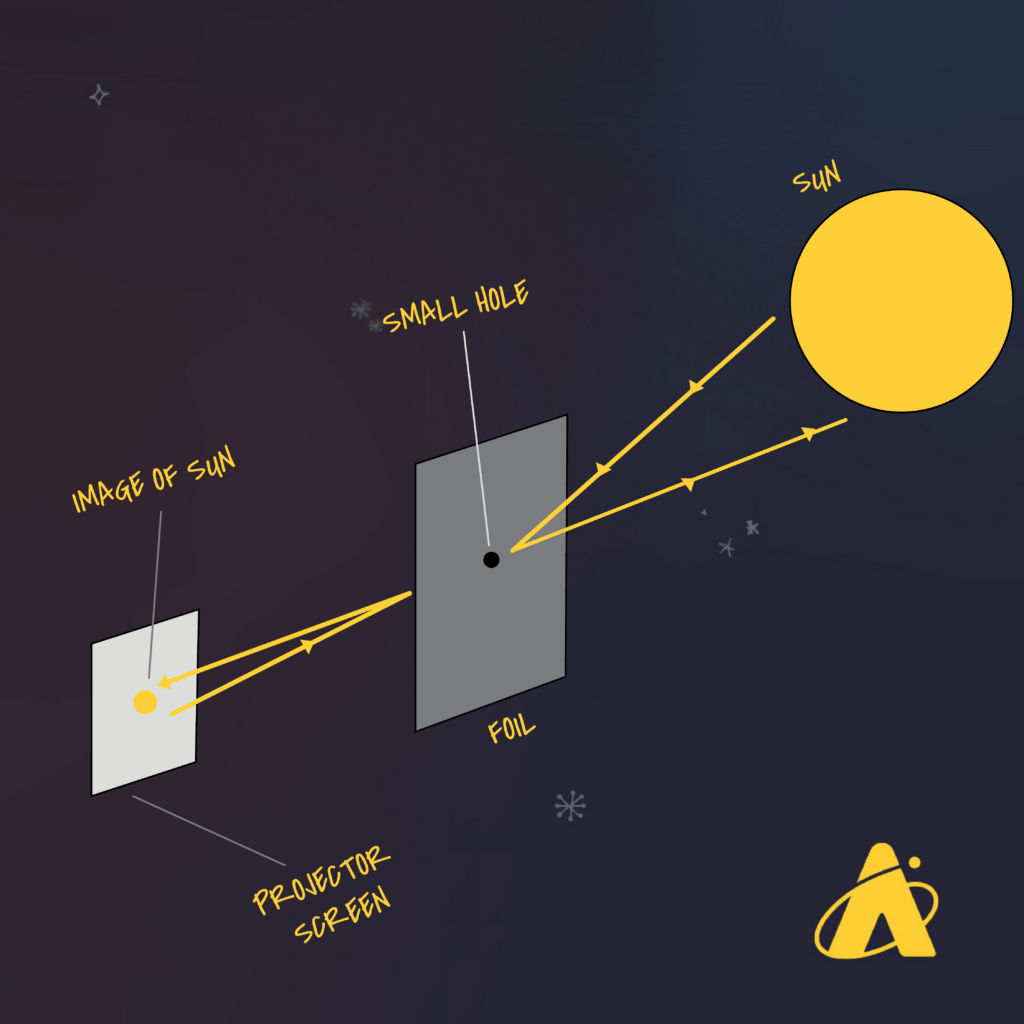
If you do not have solar viewers or solar glasses, you can look at an image of the eclipse through pinhole projection! Pinhole projection means that sunlight projects through a small hole in an object onto a surface beyond, and you look at the solar image on the surface. Never look through a pinhole at the Sun.
You can use your hands as pinhole projectors. Put your back to the Sun. Put the outstretched, slightly open fingers of one hand over the outstretched, slightly open fingers of your other hand in a criss-cross or tic-tac-toe pattern. Look at your hands’ shadow on the ground. The little spaces between your fingers will be the pinholes that will project a grid of small eclipse images. You may need to adjust the spacing of your fingers a bit to see the shadows better.
Trees can also be used as pinhole projectors. Look down at the ground underneath trees. The tiny spaces between the leaves will be the pinholes that will create dozens of images of the partial eclipse.
Household materials can also be made into pinhole projectors. Punch a small hole in an index card or paper plate or piece of aluminum foil, and use that to project an image of the eclipse onto the ground. Or, find objects that have small holes in them, such as pasta strainers or pieces of pegboard. You can even try using small holes in different foods as the pinholes—try crackers!
Learn how to make a pinhole projector using a cardboard box!
Partial Solar Eclipse Timeline
Partial Solar Eclipse Starts: 10:37 am CDT
Maximum Eclipse Coverage: 11:58 pm CDT
Partial Solar Eclipse Ends: 1:22 pm CDT
Please note these times are for the Chicago area.
Tips and Tricks For Safely Seeing This Solar Eclipse
- Check the weather beforehand
- Double check the time of the solar eclipse phases in your time zone leading up to maximum coverage
- Always use proper and protective solar filtered eyewear
- To stay up-to-date with all things solar eclipse, be sure to sign up for our emails and select “Eclipses Across Illinois + Solar Eclipse Info.”
Watch The Partial Solar Eclipse Online
Watch the solar eclipse live with Sky Observers Hangout! Weather permitting, our astronomy educators will livestream the eclipse through a solar telescope in Chicago. We’ll guide you through how this celestial alignment occurs, what makes this an annular eclipse, and offer some tips on how you can view the eclipse as it happens!






